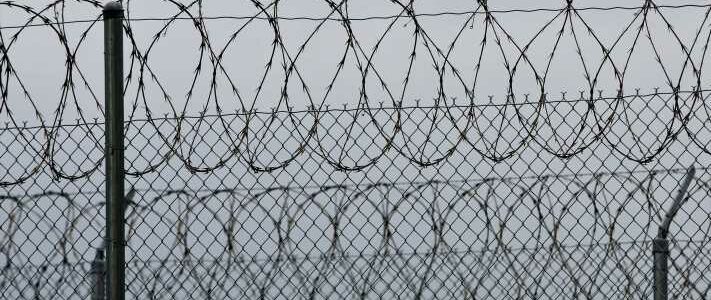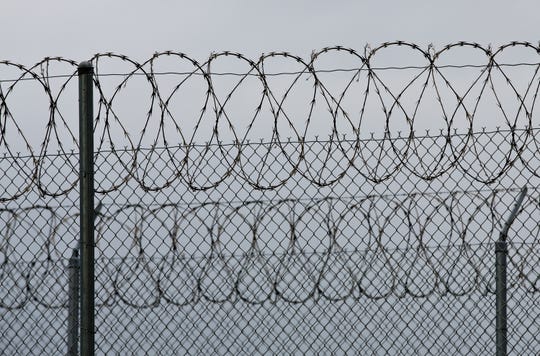
How the deadly Texas storm was a reminder of an inhumane US prison system
Last month, as a series of winter storms raged through Texas, prisons and jails across the state descended into chaos. Thousands of people who were packed together in facilities were left with no running water, limited or inedible food, and overflowing toilets. Many were made to sleep on the floor in freezing temperatures, could not take necessary medicine, and resorted to selling water to each other. Storm preparations and responses failed people across the state — but, as is often the case, incarcerated people were among the hardest hit, least noticed and last helped.
What happened in Texas was a tragedy, but it was not a first, nor was it unexpected.
Over the past four decades, the United States built one of the world’s largest prison systems to warehouse as many people as cheaply as possible, with inadequate investment in basic health and safety precautions. And all too often the conditions in these facilities fail to meet human rights standards.
Not only is this starting point cruel and inhumane, but it’s also glaringly ineffective at promoting safe and healthy communities.
Exterior shot of a Texas prison. (Photo: Thomas B. Shea/for USA TODAY)
Decades of research has taught us that a maze of countless factors — from turbulent family relationships to poor nutrition to childhood lead exposure to violence — can bring people closer to harmful behaviors. While protective factors — from trusting relationships to tight-knit communities to positive educational climates — can have the opposite impact. Extreme stress can change the structure of the brain, sparking increased sensitivity in the region that makes snap decisions while physically shrinking a region that contributes to logical reasoning. This all underscores that many serious crimes are the product of years of abuse, neglect or just bad luck — and it means that even those who cause serious harm can, and do, change with the right environmental stimulation.
And yet, despite piles of evidence showing that stress and trauma are major drivers of violence, we still rely on prisons defined by constant stress and trauma. Then, when many of those previously incarcerated struggle when they get out and return to the system, we wonder why these approaches are not working.
COLUMN: Infectious disease expert, former attorney general: Prioritize COVID vaccines for inmates
U.S. prisons are densely crowded, which means that conflicts quickly escalate and multiply. Physical and sexual violence — by both prisoners and staff — are rampant and often leave even bystanders with post-traumatic stress disorder. Prisoners are forced to dress alike, called by numbers instead of names, and denied privacy. Barriers to visits and exorbitant phone fees keep people in prison isolated from their loved ones, while poor nutrition, mold infestations, polluted drinking water and substandard medical care deteriorate their health. Humans are remarkably adept at changing behavior to mirror others’ expectations, even without realizing it. So when prisons treat people as subhuman, many begin to look like their worst selves.
Our nation’s approach to criminal justice is particularly baffling because we have so much evidence highlighting the factors that stop people who have committed crimes from continuing to cause harm. Strong relationships and social networks make people less likely to reoffend, yet we go through pains to isolate people who commit crimes from their families and communities.
COLUMN: Floyd family attorney: As Derek Chauvin trial begins, progress shows the power of protests
Stable employment makes people less likely to reoffend, yet we create innumerable barriers to employment and often systematically refuse to hire returning citizens. People who develop an identity beyond their crime, and know that others believe in their potential, are less likely to reoffend, yet every corner of our prison system signals that criminals are not worth the most basic human decency.
In the U.S., we have grown so used to brutal prisons that many of us never presume that a prison system could be both effective and humane. But it can — just look at Germany and the Netherlands.
Both countries built their modern justice systems around goals of preventing crime and valuing human dignity, rather than feeding a hunger for punishment. Prison life is as similar as possible to life in the community, so returning citizens are equipped to re-join society. Incarcerated people wear their own clothes, cook their own meals, work jobs (often outside prison walls) that will equip them to build stable careers, and sleep in private rooms. And, while it’s almost impossible to accurately compare recidivism rates between countries, data suggests that people released from German and Dutch prisons are far less likely to reoffend than those leaving U.S. prisons.
Responsibility for creating safe, rehabilitative prisons lies with everyone who helps to shape the justice system. But, one potential change-maker whose role is often overlooked is the elected prosecutor. They must ensure that when they decide to put people behind bars, they are not sending them to inhumane facilities that undermine public safety.
POLICING THE USA: A look a race, justice, media
Prosecutors can use their platform to advocate for improvements to prison facilities, educational programming, and health care. Prosecutors should also step up and investigate poor conditions, abusive staffers and inadequate medical care, as St. Louis Circuit Attorney Kim Gardner committed to do last month, after the city jail’s deplorable conditions led prisoners to stage multiple protests.
If Americans want a criminal legal system that works, we must accept the notion that people are worth more than the lowest moments of their lives. Otherwise we will be destined to watch prisons’ revolving doors keep turning. We know how to achieve a justice system that encourages growth and rehabilitation, we just have to commit to creating it.
Miriam Aroni Krinsky, executive director and founder of Fair and Just Prosecution, is a former federal prosecutor.
Source: Read Full Article
